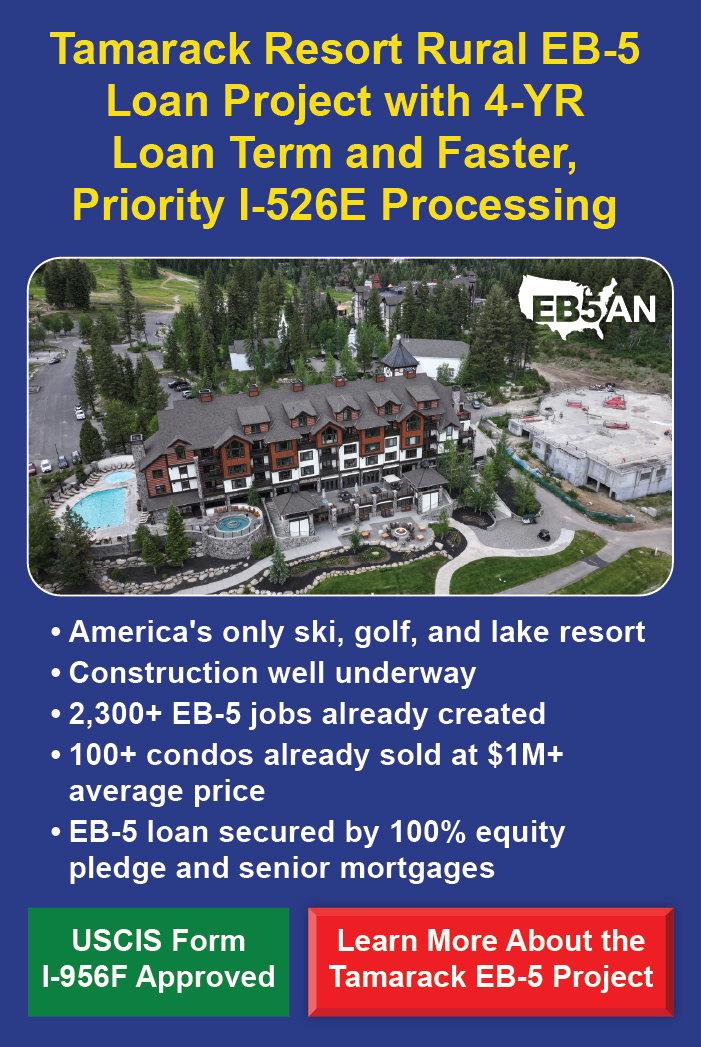
The EB-5 program is one of the most popular pathways to obtaining a U.S. Green Card. The program grants U.S. permanent residency to foreign nationals who can invest substantially in the U.S. economy and create at least ten full-time jobs for American workers.
It has become increasingly sought after by high-net-worth individuals of diverse nationalities, with Indian and Chinese nationals topping the list of applicants. The reforms and policy changes that came with the EB-5 Reform and Integrity Act (RIA) of 2022 only further increased the demand for EB-5 visas by Indian investors.
In this article, we’ll outline the benefits the EB-5 program offers to Indian investors and how you can fast-track your immigration journey with the EB-5 visa route.
Direct Route to U.S. Permanent Residency
Fast-Track Immigration
Enhanced Education and Employment Opportunities
Freedom and Flexibility
Minimal Investment and Immigration Risks
Expedite Your Green Card With EB5AN
Direct Route to U.S. Permanent Residency

One of the most attractive benefits the EB-5 visa offers is a direct route to U.S. permanent residency and eventual citizenship.
The EB-5 Immigrant Investor Program was introduced by the U.S. Congress in 1990. It grants U.S. permanent residency to foreign investors and their immediate family members (spouse and unmarried children under 21) in exchange for an investment of $1.05 million, or $800,000 in targeted employment areas (TEAs).
While other pathways exist for Indian nationals to obtain a U.S. Green Card, most involve longer processes that create uncertainty. The EB-5 visa route also has fewer restrictions compared to most other immigration pathways. It does not require exceptional ability, educational qualification, professional accomplishment, or employer sponsorship.
Once you receive your EB-5 visa, you and your dependent family members can live, study, and work anywhere in the U.S. You’ll also enjoy freedom of travel in and out of the U.S. without restrictions.
You can become eligible for U.S. citizenship by naturalization after five years of residence in the U.S. with your EB-5 Green Card. The initial two-year conditional permanent residency period also counts towards the five-year qualifying residency period for your citizenship application.
Fast-Track Immigration

The primary challenge Indian nationals face when seeking U.S. permanent residency is the extensive backlog in employment-based Green Card applications. This is because, for several decades now, the annual demand for U.S. immigrant visas from Indians far exceeds the amount allocated by USCIS, creating a year-on-year waitlist.
According to recent USCIS data, over one million Indians are on the waitlist for employment-based visas. Some may have to wait years or even decades to be considered for a Green Card.
The EB-5 program offers Indians a pathway to escape the long wait times for a Green Card. Indians can benefit from the concurrent filing provision and reserved set-aside visas where there are currently no backlogs or extra wait time. We’ll discuss these advantages in the sections below.
Set-Aside Visas
RIA 2022 established a reserved “set-aside” visa sub-category that has improved EB-5 processing times for Indians and other high-demand nationalities. It allocates 32% of the annual EB-5 allocation as a set-aside visa quota: 20% for rural TEA projects, 10% for high-unemployment area projects, and 2% for developmental infrastructure projects.
Indian investors can avoid backlogs in the unreserved EB-5 category and receive their Green Cards quickly by investing in projects that qualify for the set-aside visa quota. Rural set-aside visas also receive priority processing from USCIS, and many investors have received I-526E approval within 12 months.
By investing in rural TEA projects, Indian investors can receive their Green Cards within months instead of waiting for several years or decades in the unreserved category.
Concurrent Filing
The concurrent filing option is another beneficial provision of RIA 2022. It allows EB-5 investors already in the U.S. on nonimmigrant visas to simultaneously file for adjustment of status (I-485), employment authorization, and travel authorization along with their EB-5 petition.
Indian nationals in the U.S. on nonimmigrant visas such as F-1 and H-1B visas are significant beneficiaries of this provision. They no longer have to leave the U.S. and apply for the EB-5 visa through consular processing or apply for visa renewal when their nonimmigrant visa expires.
With the concurrent filing provision, they can receive work and travel permits and enjoy the benefits of a U.S. Green Card while USCIS processes their EB-5 petition. This provision has benefited Indian H-1B professionals following the recent massive tech layoffs, allowing them to remain in the U.S. without employer sponsorship.
Enhanced Education and Employment Opportunities

The U.S. boasts some of the most prestigious educational institutions and one of the strongest economies worldwide. An EB-5 visa grants its holder and their derivative beneficiaries the freedom to study and work anywhere in the U.S.
With the EB-5 visa, your children can access world-class educational institutions. They can also benefit from scholarships and other financial aid available to U.S. citizens and permanent residents. Upon graduation, the EB-5 Green Card gives them access to limitless career opportunities in the U.S. and a stable footing to favorably compete in the job market.
Freedom and Flexibility
The EB-5 program offers the most freedom and flexibility among all U.S. employment-based visas. EB-5 rural TEA investors do not have to live near their projects or be actively involved in managing the operations of the new commercial enterprise.
It gives you more control over your life and future in the U.S. You and your family are free to live anywhere in the U.S., work for any employer you choose, open a business, attend any school or college, and travel without restrictions.
Minimal Investment and Job Creation Requirements
To qualify for the EB-5 visa, interested Indian citizens must invest $800,000 in a TEA project or $1.05 million in a new commercial enterprise outside of TEAs.
Many Indian investors prefer regional center-sponsored projects because most are located within targeted employment areas, requiring a lower investment of $800,000. It also minimizes the financial and immigration risk for the investor as most regional center projects are large-scale developments handled by experienced developers.
It can be easier for regional center investors to meet the job creation requirement for their EB-5 visa and get their funds back in a few years, since indirect and induced jobs can also be counted towards this requirement in regional center projects, as opposed to direct EB-5 investments.
Expedite Your Green Card With EB5AN

The EB-5 program is one of the fastest and easiest pathways for Indian nationals to obtain a U.S. Green Card. It enables you to avoid backlogs and long waitlists in other sponsored visa routes and offers more flexibility. It may be your best option as an Indian investor looking for a fast way to acquire U.S. permanent residency.
If you decide to pursue the EB-5 route, EB5AN can help you accelerate your journey of becoming a U.S. permanent resident. We’ve helped over 2,300 families successfully relocate to the U.S. in over a decade of practice. We offer our clients first-rate, low-risk EB-5 regional center projects with a 100% USCIS project approval rate to date.
To learn more about EB-5 regional center projects and how we can help you expedite your Green Card journey, schedule a one-on-one call with our EB-5 experts today.











